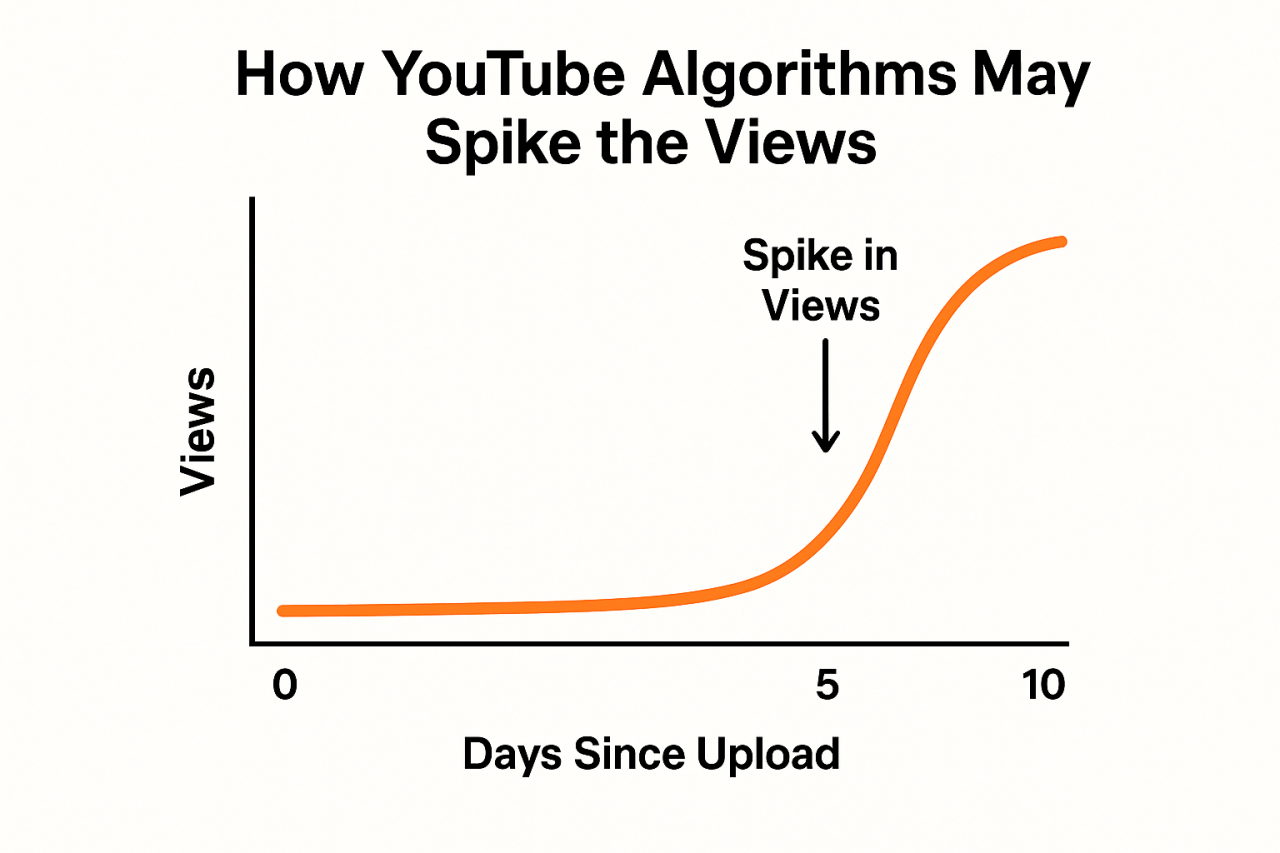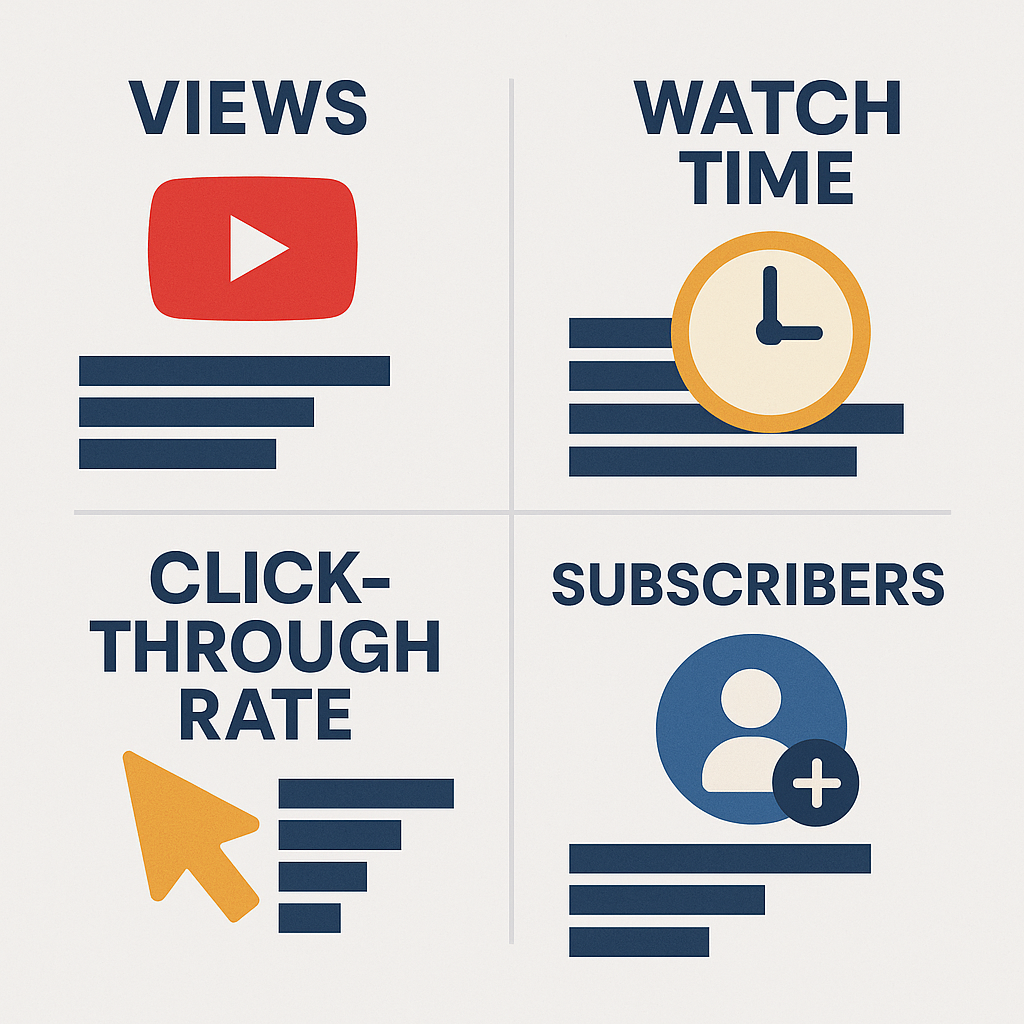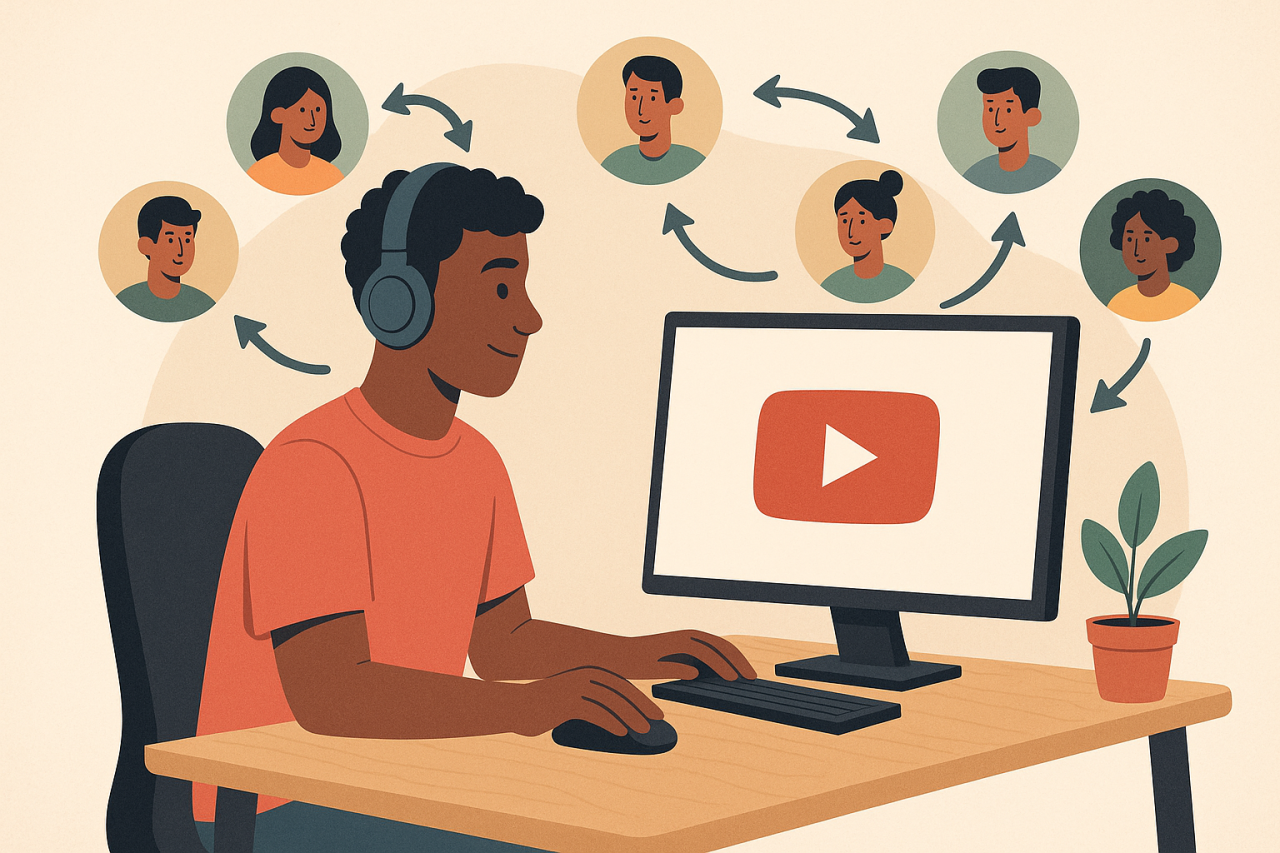Every YouTuber knows the thrill of watching a new video catch fire. Maybe you uploaded a vlog or a tutorial and, a few days in, the views are climbing fast. Now you’re facing a classic creator’s dilemma: you have another video ready to go, but your last upload is still rising in popularity. Do you hit publish on the new one, or wait and let the current hit run its course? The timing of your uploads can have a real impact on your channel’s growth and momentum. It’s not just about filling your upload schedule – it’s about working with the YouTube algorithm and your audience’s attention. In this article, we’ll explore why timing matters and break down the factors to consider before posting a new video when your previous one is still gaining traction. We’ll look at how the algorithm might react, how viewers behave, and share examples from different niches (music, news, vlogging, evergreen content) to help you make an informed decision.
Jun 01 2025 • 39 min read • 7689 words
Should You Post a New YouTube Video While Your Last One Is Still Gaining Traction?

Core Factors to Consider When Posting a New Video
When deciding whether to post a new video while another is still hot, several core factors come into play. Understanding these can help you predict what might happen and choose the best course for your channel.
The YouTube Algorithm and Upload Frequency
YouTube’s algorithm is a mysterious beast, but one thing is clear: it pays attention to viewer behavior and channel activity. How often you upload can influence how your videos are recommended. There’s a balance to strike. On one hand, regular uploads can signal that your channel is active, giving the algorithm more content to serve to viewers. In fact, if one of your videos is doing well (lots of views, likes, comments), the platform sees your channel as “hot” and might be more likely to surface your content in general. This is why some creators feel a surge of overall channel impressions when a video pops off
YouTube is essentially testing your other content with that influx of interested viewers
On the other hand, there are only so many eyeballs and impression slots to go around at any given moment. If you drop a new video too soon, it could split the attention. Anecdotes from creators and even a YouTube employee have suggested that a brand new upload can start taking impressions (recommendations in feeds) that might have otherwise gone to your earlier video. In plain terms, your two videos could end up competing with each other for visibility. The algorithm doesn’t necessarily “punish” you for posting another video, but it will try to find the right audience for each – and if that audience is essentially the same people, the videos will be sharing that exposure. Some YouTube officials have explained that different channels thrive on different paces: some audiences love bingeing lots of content (think daily vlog channels or gaming highlight channels), while others respond better when videos are spaced out so they don’t get overwhelmed. There’s no one-size-fits-all rule from the algorithm’s perspective. What matters is how viewers react – the algorithm follows the audience’s lead.
Audience Attention Span and Behavior
Just because you can post frequently doesn’t always mean your audience will want to consume everything immediately. Consider how much time and interest your viewers have. If your last video is 20 minutes long and doing great, many viewers (especially subscribers) might still be catching up on it. If you throw a new 20-minute video at them the next day, they might skip over the older one to watch the new one, or decide to “save for later” and possibly never come back to it. On the flip side, if your content is short or highly bingeable – say you run a comedy skit channel or a daily news roundup – your audience might be ready for another video sooner. An important metric here is “Average views per viewer” in your YouTube Analytics. This metric tells you how many of your videos each viewer tends to watch on average.
If you notice that when you increase upload frequency this number drops, it’s a sign that you might be posting more than your audience wants to see.
They’re not keeping up with everything. Some seasoned creators intentionally give their videos some breathing room, allowing viewers to focus on one video at a time. For example, a travel vlogger might upload weekly to let each travel episode soak in audience attention, whereas a daily vlogger’s audience expects something new every day and is fine with that pace. Knowing your viewers’ habits – do they watch every upload immediately, or do they trickle in over several days? – will guide you. The key is to avoid viewer fatigue or overload. Remember, a highly engaged audience might watch two or three videos from you in a short span, but most casual viewers won’t watch everything if you dump too much content on them at once.
Video Interlinking and Topic Overlap
Another factor is how related the new video is to the one that’s currently gaining traction. If they cover similar topics or appeal to the same interest, they could actually complement each other instead of purely competing. YouTube’s recommendation system often groups related videos from the same channel. This means if someone is watching your current hit video about, say, “10 Tips to Improve Your Guitar Playing,” and your new video is “Guitar Tips Part 2” or something closely relevant, there’s a good chance the new video will be suggested to those viewers – or vice versa. In this case, posting a new, related video might actually boost the older video’s views too, by creating a cluster of content that viewers consume together. We often see this in practice with series or thematic content: for instance, a tech reviewer who uploads a review of a new smartphone might follow up soon with a camera test or a tips-and-tricks video for that same phone. Viewers interested in one will likely watch the other, increasing session time on the channel. However, if the new video is on a completely different topic or caters to a different segment of your audience, you risk fragmenting viewer attention. Imagine you run a variety channel and your unexpected hit was a cooking video that went viral. If your next upload is an unrelated travel vlog posted too soon, those new viewers who came for the cooking content might lose interest or get confused about your channel’s focus. So, consider how well the content of the videos align and whether you can leverage their connection. Using tools like end screens or info cards to explicitly link the two videos can help guide viewers from one to the other – but more on that in the Best Practices section.
Channel Activity and Consistency
Finally, think about your overall upload rhythm and how this next video fits in. Consistency is often cited as key to growing on YouTube. Many creators stick to an upload schedule (like every Friday, or twice a week) so their audience knows when to expect new content. If your last video is still climbing and you usually post on a schedule, you have to decide: do you break the schedule to give the video more time, or maintain consistency regardless? There’s no universal right answer, but consistency does help maintain long-term audience trust. If you normally post weekly and your big video was just a few days ago unexpectedly, it might not hurt to wait until your usual slot to drop the next one – your core fans might be used to that pace anyway. On the other hand, if you haven’t been consistent historically and you suddenly have a hit, it might be wise not to disappear for too long. New viewers discovering your channel through that hit will check when your next upload is. Some YouTubers worry that if they don’t feed the wave of new interest quickly, people might drift away or forget about the channel. There’s also some speculative talk among creators that the YouTube system notices when a channel with momentum suddenly goes quiet – possibly “cooling off” on promoting your content until you come back. While this isn’t officially confirmed, it’s rooted in a logical idea: YouTube wants to keep viewers engaged, and an active channel can engage viewers more than a dormant one. The bottom line is, consider how this new video fits into your overall content cadence. Are you being trigger-happy due to excitement, or is it a strategic addition at the right time? Balance short-term gains with long-term habit: you want both the current video and the new one (and ones after that) to each have a chance to shine.

Understanding Video Lifecycles and Momentum
Not all YouTube videos behave the same once you hit publish. Some burst out of the gate with high velocity and then taper off quickly; others start slow and then suddenly catch fire days or even weeks later. Understanding the typical lifecycle of your videos – and recognizing where your currently trending video is in its journey – is crucial before deciding whether to post another. Think about how viewership often unfolds:
- Immediate Spike: Many videos, especially for channels with a subscriber base or if the topic is timely (like news or a hot trend), will get a big chunk of their views in the first 24–48 hours. Your subscribers get the notification, initial recommendations go out on homepages, and there’s a flurry of activity. After this “launch window,” views might drop off if the video doesn’t break out to a wider audience.
- Ongoing Recommendations: If the video performs well with that initial audience (high click-through rate on its thumbnail, good watch time, lots of engagement), YouTube’s algorithm often starts showing it to more people via “Suggested Videos” or the home feed. This can lead to a second wave of growth. Sometimes a video that was doing “okay” in the first two days suddenly starts climbing faster on day 3 or day 5 because the algorithm found a pocket of audience that loves it. For example, you might have a makeup tutorial that initially only your subscribers watched, but a week later it gets picked up by the search and suggested systems due to a popular related trend, and the daily views actually increase.
- Social/External Boosts: There are cases where a video’s growth comes from outside YouTube – say, it gets shared on Reddit or a popular blog a few days after upload, sending a surge of new viewers. This can give a video a longer tail and even viral liftoff well after the publication date. A classic anecdote is a funny skit or commentary video that might languish with a few thousand views until someone influential shares it, and then boom – it’s everywhere a week or two later.
- Long Tail Evergreen Views: If your content is evergreen (like “how to” videos, educational content, music, etc.), it might have a long, slow burn. The video could steadily gain traction over months as people discover it via search or word of mouth. Each day might not be huge, but over time it amasses significant views. Importantly, these videos can also suddenly spike if circumstances change (imagine an old tutorial on remote work tools spiking during a sudden shift to work-from-home, or an old song trending because of a TikTok meme).
So, where is your current video on this curve? If it’s still in a growth phase – rising daily in views, being widely shared, with a high click-through rate (CTR) and strong watch time – you know it still has momentum. Those metrics are your clues: a high CTR means whenever the video is shown to people, they’re interested enough to click; good average watch duration means they’re sticking around, and lots of comments or likes mean people are engaged. In YouTube’s eyes, that video is far from done. It’s likely still being aggressively recommended to new viewers. Posting another video in this phase could interrupt that trajectory. It’s like having a song climbing the charts – you usually wouldn’t release a new single to radio while the current one is #10 and climbing, because it might stall its progress. In YouTube terms, releasing a new video might cause the algorithm to split its energy, giving your rising video a bit less priority than it was getting when it was the sole focus of your channel’s freshness.
On the flip side, if the data shows that the video’s growth is leveling off – say your CTR has started to drop, or the view graph has plateaued or is dipping after the initial burst – then its lifecycle might be entering a steady state. At that point, a new upload is less likely to “steal” thunder, because the thunder has naturally quieted a bit. For example, a news commentary video on yesterday’s headlines will probably see most of its action within the first couple of days; by day 5 it might be old news. Uploading a new video after that won’t hurt because the old one wasn’t going to suddenly blow up in day 6 out of nowhere (barring something unusual). But if it’s an evergreen video, make sure it’s truly slowing down, not just gearing up for an algorithmic second wind. It can be hard to tell sometimes, which is why many creators err on the side of giving a successful video a little extra time to be sure. Another aspect of momentum is audience anticipation. If a video is doing really well, you often have a growing pool of new viewers discovering your channel through it. Those viewers might binge some of your older videos if they really like you, and they’ll possibly subscribe. There’s a kind of mini-fandom forming around that video. Dropping a new video soon can harness that excitement – if the new video is something that those viewers would naturally be interested in next. This is where understanding the momentum in context matters: is your video going viral in a niche community that you can cater to with a follow-up? Or is it more broad? For example, if a famous musician’s vlog about tour life unexpectedly goes viral beyond the fanbase, maybe a follow-up “behind the scenes part 2” would keep those casual viewers around. But if you don’t have a relevant follow-up, you might decide to just let the original keep doing its thing. In summary, gauge the lifecycle: Is your video still climbing the rollercoaster, near the peak, or coasting down the other side? Use your analytics – real-time views, CTR, watch time, and engagement – as a compass. Understanding where you stand will make your decision to upload now or later much clearer.
Risks of Uploading Too Soon
Let’s talk about the downside: what could go wrong if you post a new video while the previous one is still red-hot? There are a few notable risks and potential drawbacks, and they mostly revolve around splitting focus and momentum.
In summary, uploading too soon can potentially rob your rising video of its full potential by splitting views and discovery, and it can overwhelm or confuse your audience. These risks don’t mean you should never post frequently – many channels thrive on back-to-back content – but it means you should be strategic. If you decide to post, you’ll want to mitigate these pitfalls (with tactics we’ll discuss). If you decide to wait, you’re essentially allowing your current video to ride its wave without interference.
Read about all risks below.
Premium content
Log in to continue
When Posting a New Video Helps
It’s not all cautionary tales – there are definitely scenarios where posting a new video early, even while another is still gaining traction, can pay off big time. Let’s explore some situations and examples where releasing a new video sooner than later actually amplifies the success of the previous one or benefits the channel overall.
Feeding a Binge-Watching Frenzy
Sometimes, a single video’s success creates a hungry audience. If viewers finish your hot video and are clamoring for more on that same subject, giving them a follow-up quickly can keep them on your channel longer (which YouTube loves) and satisfy those viewers, turning them into fans. For instance, think of a multi-part series or a narrative that naturally continues. If Part 1 of your investigative documentary or story-driven vlog blows up, a Part 2 released while interest is sky-high can act like gasoline on a fire. People who just discovered you through Part 1 will be thrilled to see there’s more, and they’ll jump to Part 2. Not only does Part 2 get instant traction thanks to the interest from Part 1, but many viewers will go back and forth – new viewers might see Part 2 first and then go watch Part 1 for context, or vice versa. The two (or more) videos end up boosting each other in the algorithm as a cluster of highly watched content. A great example is in the gaming niche: if a YouTuber posts “Episode 1” of a gameplay series and it unexpectedly goes viral in the gaming community, releasing Episode 2 the next day or two can capture all those excited viewers before they wander off to another channel’s content. They binge your series instead, and you’ve effectively ridden the wave you created. Many successful gaming channels schedule series episodes close together when they see the pilot taking off, to keep momentum within their channel rather than letting viewers get impatient and find entertainment elsewhere.
Capitalizing on Trends and Current Interest
In fast-moving niches like news, politics, or even music and pop culture, timing is everything. If your video is gaining traction because it tapped into a trending topic or a current event, that trend might not last long. In these cases, posting another video while the topic is still hot can be smart. Take a news commentary channel as an example: suppose you posted a video about a breaking news story and it’s doing numbers. That story will evolve or people will seek more information within days. If you have an update or a related angle to share, posting it while your first video is still being widely viewed can establish your channel as the place to go for that story. Viewers who just watched your initial take are likely to click your new video to get the latest update, boosting your views and also keeping them engaged with your content rather than looking elsewhere. Similarly in the music niche, imagine you’re a music reviewer and your review of a surprise album release is taking off. It might actually be beneficial to drop a “reaction video” or a follow-up ranking the songs shortly after. People who loved the album are in a frenzy for content about it in that moment, and by providing more, you not only get more views but reinforce your presence in that topical search. In some cases, releasing a new video early can extend the life of the trend on your channel – you keep feeding viewers so they stick around. It’s a bit like serializing content on the fly to match the audience’s appetite.
Synergy Between Related Videos
When two videos are closely related, they can create a positive feedback loop. One view often leads to another. This is particularly true if you intentionally make them complement each other. For instance, if you’re a tech YouTuber and you have one video “Reviewing the New XYZ Smartphone” gaining traction, a timely new video like “XYZ Smartphone: 10 Hidden Features You Should Know” can actually drive more interest to the review as well. A viewer might watch the review first and then the features video, or maybe they find the features video and then go watch the full review to get the bigger picture. In YouTube’s sidebar, these two will likely appear next to each other. Now instead of one high-performing video, you have a pair. Each acts as an advertisement for the other. We see similar synergy in the education and how-to space: a channel about digital art might have one video go viral about “How to Draw Eyes Realistically.” If that creator quickly puts out “How to Draw Noses” or a part two focusing on another aspect of the face, it’s likely that anyone enthralled by the first tutorial will click the second. This can actually amplify the first video’s performance because the algorithm notices viewers going from one to the other, which is a positive signal (showing that those who liked one video on the channel are sticking around for more). Essentially, you create a mini library on a topic within a short time frame. That can position your channel as a go-to resource for that niche, beyond just a one-hit wonder video.
Retaining New Subscribers and Riding the Wave
One of the best “problems” to have on YouTube is when a video gains you a bunch of new subscribers in a short time. The challenge then is keeping those new subscribers engaged so they don’t forget about you. Posting a new video sooner rather than later can be a way to welcome them and show what your channel is about. For example, a vlogger might gain 5,000 new subs from a single viral travel story. If she waits a month to post again, many of those people might not even remember why they subscribed or might have lost that initial excitement. But if she posts another interesting vlog within a few days or a week – ideally one that appeals to the same interests that brought them in – she has a better chance of converting those subscribers into a loyal audience. They’ll think, “Great, more content from this creator I just discovered!” and they’ll tune in. Many viewers, after subscribing, look for a second piece of content to solidify their opinion of you. If your follow-up content resonates with them, you turn a one-time viewer into a fan. This is why you’ll see some creators explicitly say, “If you’re new from my last video, welcome!” in the next video – acknowledging the influx and riding the wave of enthusiasm.
Ultimately, posting a new video while another is hot can help when the content is complementary, when timing is critical to a trend, or when you need to keep newfound viewers hooked. In these cases, the strategy is about amplification rather than competition. You’re using the momentum as a springboard for more success, not as a reason to rest on your laurels. The key is making sure the new video adds value to what’s already happening on your channel, so that 1 + 1 becomes 3, in terms of channel growth.
Examples from Different Niches below.
Premium content
Log in to continue

Best Practices and Proven Tactics
Whether you choose to hold off or go ahead with a new upload, there are several strategies and tactics that experienced creators use to make the most of the situation. These best practices can help you maximize benefits and minimize drawbacks, ensuring that each video you post reaches its potential without detracting from others on your channel.
A few proven tactics from successful YouTubers: Some treat their big videos almost like product launches – they’ll let a video run and only when its performance starts to wane, they release the next “big” video, almost like restocking the shelf. Others have found success in pairing a viral hit with a quick one-two punch of a follow-up (as we described) to lock in audience interest. There’s also the “premiere” strategy: if you plan a quick follow-up, consider using YouTube’s Premiere feature for the new video. It creates a landing page and notifies people ahead of time, which can build hype and give your current viewers something to look forward to without actually releasing it instantly. For example, you could set a premiere for two days later, and mention in your community posts or even in the comments of the trending video, “I’ve set my next video as a premiere – come chat with me live during the countdown!” This leverages the current attention to funnel people into an upcoming event, effectively stretching the momentum.
So, should you post a new YouTube video while your last one is still gaining traction? The honest (if slightly unsatisfying) answer is: it depends.
There is no universal rule, because YouTube is a dynamic ecosystem with many variables. The best approach is a strategic one – weigh the factors we’ve discussed and make an informed choice based on your unique situation. Timing on YouTube truly matters, but not in a simplistic way. It’s not as if there’s a strict upload frequency that guarantees success or failure. Instead, it’s about understanding momentum and audience behavior. If your last video is on a rocket ride upwards, consider whether a new upload will fuel that ride further or accidentally cut the engines. Take into account the algorithm’s tendencies (it’ll give love to new uploads but also likes to follow viewer interest), and take into account your viewers – are they hungry for more right now, or are they still digesting the last course you served?
One key takeaway is that there’s no one-size-fits-all answer. A daily news channel will handle this differently than a monthly documentary-style channel. A music video might need breathing room, whereas a gaming series might benefit from rapid succession. Always factor in your niche and what your audience expects. Look at your own analytics history: those numbers and patterns are essentially your audience telling you what works for them. Remember, strategic timing doesn’t mean you’re at the mercy of guessing games.
Use your channel data (views, CTR, watch time, engagement, average views per viewer) and the content itself as guides. And don’t be afraid to experiment.
Maybe try spacing out uploads more at first and see if each video’s average views go up. Or try clustering a couple of related videos and see if they amplify each other. You might be surprised – every channel has its own “sweet spot.” The crucial thing is to stay audience-focused. If you keep your viewers’ experience at the forefront – ensuring they’re not overwhelmed, but also never bored – you’ll likely make the right call. If you do decide to wait, use that time wisely: promote your existing video, interact with your community, maybe tease what’s coming next to build anticipation. If you decide to post, make sure that new video shines and serves up what your viewers crave, so that even if it does steal a bit of thunder from the last one, it’s worth it. In the end, success on YouTube is a marathon, not a sprint. A single video’s performance is fantastic, but sustained growth comes from stringing together wins without tripping over ourselves in the process. Sometimes that means pausing and letting a good thing flourish; other times it means seizing the moment and doubling down. By understanding your video lifecycles, respecting your audience’s viewing habits, and using smart tactics to time and promote your content, you’ll find the rhythm that keeps your channel growing. So, evaluate, experiment, and learn. The next time you find yourself asking this question, you’ll have a wealth of insight (and your own past experience) to draw on. Happy creating, and may your channel continue to ride those positive waves – at whatever pace turns out to be the best!
Premium content
Log in to continue
You might like

Video Length and YouTube Algorithm: Strategies for Music Channels in 2025
May 03 2025
YouTube Creators: How Many Returning Viewers Do You Have?
May 19 2025
YouTube’s Algorithm In 2025: A Creator’s Guide to Discovery and Growth
May 04 2025
How YouTube Playlists Boost Music Channel Performance
May 04 2025